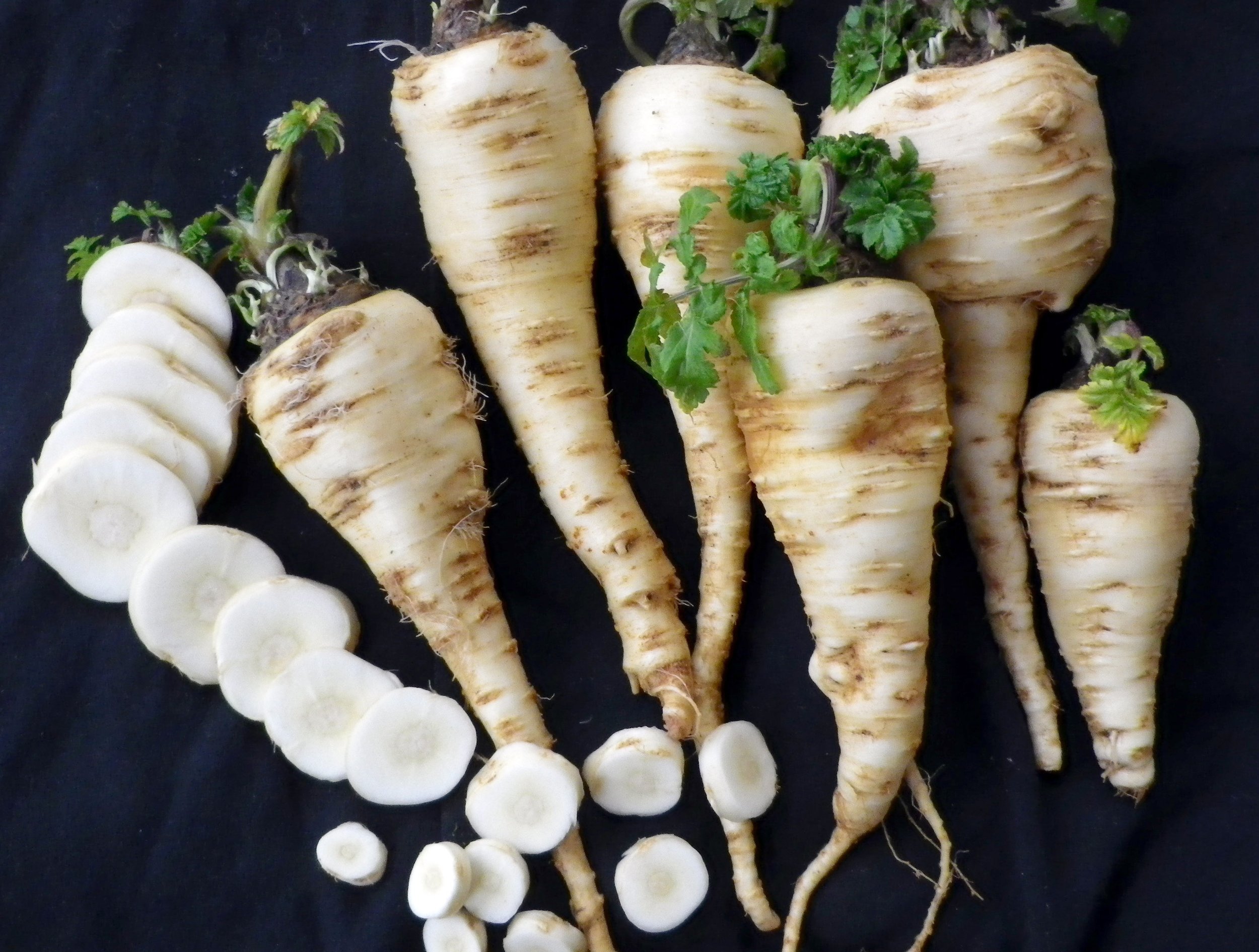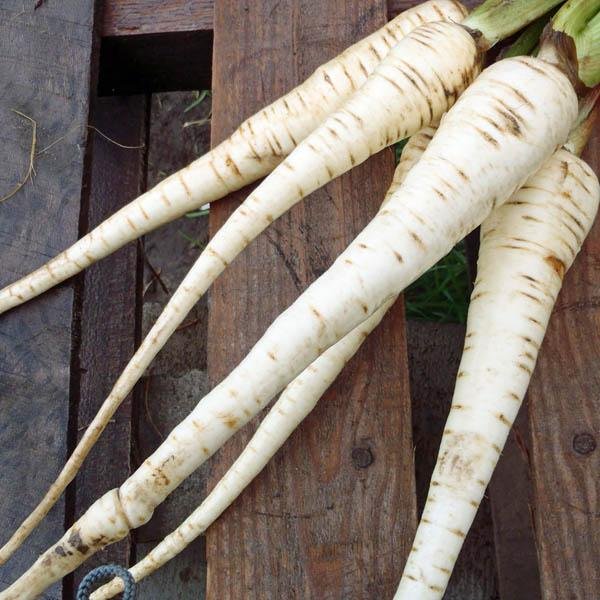Harris Model Parsnips
Pastinaca sativa • Open-Pollinated
Old-fashioned stumpy carrot that blasts through clay soils
Parsnips have a long growing season so these may be considered an advanced crop for new gardeners but this variety germinates well and takes off. It needs depth to grow up to a foot long so a raised bed or deep container or grow bag is best.
JOY MAX SCALE ✦✦✦✧✧
✦ Excellent germination for a parsnip, even if it does take a while…
✦ Delicious, tender, white, 12-inch roots have a nutty, sweet flavor.They turn common meals like soups and stews into something special or are great as tempura or roasted with other root veggies or on their own.
✦ The smoothest, whitest and easiest to clean parsnip
✦ They are packed with nutrients, like potassium and vitamins B6 and C
Basic Growing Information
Germination is the hardest bit. Watch this video and a charming Scottish gardener will show you how to chit the seeds for best germination. Make sure you have your timing right and it’s in the 70s or cooler outside.
Sow when temps are in the mid 70°s in the fall as early as possible. Parsnip seeds will germinate in soil temperatures as low as 48°F (9°C), but ideally, soil at 50º to 54ºF (10° to 12°C) will speed germination. Scatter or place seeds 2-3” apart and 1/8-1/4” deep in very loose, well-tilled, and well-drained soil in full sun. For minimum soil compaction, use raised beds or grow bags. Sprinkle the soil surface to keep moist. Do not allow soil to dry out & crust before the emergence of seedlings, which takes 1–3 weeks depending on temperature & moisture levels. Keep weed-free & evenly moist.
Pastinaca sativa HARDINESS ZONE: Annual 2-9 PLANT HEIGHT: 8-10” PLANT WIDTH: 6” SEED SPACING: 2-4” SEED DEPTH: 1/4-1/2" IDEAL TEMP: 50-75°F GERMINATION: 21-28 days DAYS TO MATURITY: 120 SOIL: Loose, loamy, well-drained LIGHT: Full Sun
Tips for Growing Parsnips
Parsnips lend a nutty, sweet flavor to any dish, but these root vegetables can also be enjoyed by themselves as a side dish.
The soil should be as soft and deep as you can make it. Unlike carrots, parsnips do love manured compost. Adding loads of coconut coir would also be ideal. Sprinkling coconut coir or vermiculite over seeds rather than soil is also helpful for germination.
Parsnips will become misshapen if they hit anything hard as they grow down into the soil. You can still eat them. Raised beds and big fabric grow bags are great for this reason.
They do take their sweet time to germinate, up to 3 weeks. This is the biggest reason they are not totally Joy Max, as you also need to keep the soil surface moist that entire time. After they are established, you still need to keep them fairly moist if you want them to reach their flavor and beauty potential. You can speed this whole process along and get better results if you use the wet paper towel method to pre-sprout the seeds in the video I linked above.
Seriously, don’t let the soil dry out. Water deeply prior to planting. Mist it regularly until the seeds sprout. You can cover with a thin piece of fabric, like muslin, to help keep it moist or even cover for the first week with a piece of plywood. I love this method.
Once seedlings are 2 to 3 inches tall, thin them so that they’re spaced 3 to 4 inches apart. To avoid disturbing the delicate roots of the remaining seedlings, simply snip off the tops; do not pull seedlings.
Mulching suppresses seeds and retains moisture.
When exposed to frosts, the starch in the root changes into sugar, resulting in a strong, sweet, unique taste but they need to be protected from hard freezes.
Note: Be careful about handling parsnips, as the sap and/or leaves can be irritating to the skin. Wear long pants, long sleeves, and gloves when weeding or harvesting.
Companion Planting
Plant with radishes to keep soil from crusting and to remind you to water as they’ll sprout much faster.
Parsnip companion plants include other root vegetables such as garlic, onions, potatoes and radishes but not carrots as they are both susceptible to similar pests and diseases. Parsnips also thrive in the same bed with peppers, bush beans and peas.




